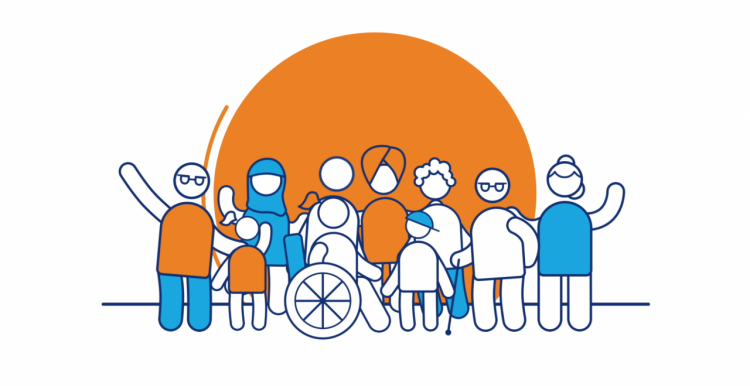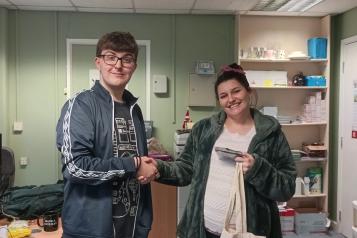Type 2 Diabetes - Risk & Prevention

What is type 2 diabetes?
Type 2 diabetes is a serious condition where the insulin your pancreas makes can’t work properly, or your pancreas can’t make enough insulin. This means your blood glucose (sugar) levels keep rising.
Around 90% of people with diabetes in the UK have type 2. It is serious condition and can be lifelong.
If left untreated, high sugar levels in your blood can seriously damage parts of your body, including your eyes, heart and feet. These are called the complications of diabetes. But with the right treatment and care, you can live well with type 2 diabetes and reduce your risk of developing them.
What causes type 2 diabetes?
We all need insulin to live. It does an essential job. It allows the glucose in our blood to enter our cells and fuel our bodies.
When you have type 2 diabetes, your body still breaks down carbohydrate from your food and drink and turns it into glucose. The pancreas then responds to this by releasing insulin. But because this insulin can’t work properly, your blood sugar levels keep rising. This means more insulin is released.
For some people with type 2 diabetes this can eventually tire the pancreas out, meaning their body makes less and less insulin. This can lead to even higher blood sugar levels and mean you are at risk of hyperglycaemia.
What are the signs and symptoms of type 2 diabetes?
When you have type 2 diabetes your body can’t get enough glucose into your cells, so a common symptom is feeling very tired. There are also other symptoms to look out for. These include feeling thirsty, going to the toilet a lot and losing weight without trying to.
The symptoms of type 2 diabetes can develop more slowly than the symptoms of type 1 diabetes, making the condition harder to spot. That’s why a lot of people don’t get any symptoms, or don’t notice them.
Some people also don’t think the symptoms are important, so don’t ask for help. This means some people can live for up to 10 years with type 2 diabetes before being diagnosed.
Risk factors of type 2 diabetes
There are several factors that can affect your risk of developing type 2 diabetes. Because the symptoms of type 2 diabetes are not always obvious, it’s really important to be aware of these risk factors. They can include:
- your age
- if you have a parent, brother, sister or child with diabetes
- your ethnicity
- high blood pressure
- being overweight
Prediabetes
You may have heard the word prediabetes in the news, or been told by your doctor that you have prediabetes.
Prediabetes is not a clinical term recognised by the World Health Organisation. But it’s starting to be used more by healthcare professionals and in the media to describe people who are at high risk of type 2 diabetes.
The good news is you don’t have it yet, and there are lots of things you can do to prevent or delay type 2 diabetes from developing.
What is prediabetes?
Prediabetes means that your blood sugars are higher than usual, but not high enough for you to be diagnosed with type 2 diabetes. It also means that you are at high risk of developing type 2 diabetes. You may not be experiencing any symptoms with prediabetes.
Prediabetes is also called:
- Borderline diabetes
- Impaired Fasting Glucose (IFG)
- Impaired Glucose Tolerance (IGT)
- Impaired Glucose Regulation (IGR)
- Non-diabetic hyperglycaemia
They all mean the same thing. So if you’ve been told you have any of these, knowing this is the first step to being able to do something about it. And there are lots of things you can do to reduce your risk of type 2 diabetes.
If you're worried about prediabetes you could call your GP and ask for a blood test. The test will be checking your HbA1C levels which is your average blood glucose (sugar) levels for the last two to three months. If you're at risk of developing type two diabetes your target range HbA1C level should be below 42mmol/mol (6%).
How can I reduce my risk of type 2 diabetes?
You can reduce your risk of type 2 diabetes by:
- eating well
- moving more
- losing weight if you're carrying extra weight
Most people know they need to make changes, but what can be difficult is knowing how to do it – especially long-lasting changes. But if you enjoy something, you're likely to stick to it.
You're not alone - there's lots of support out there for you.
Get support
Make the most of all the support and services available in your area. Ask your GP about:
- a weight-loss programme or group
- a registered dietitian or exercise specialist
- a type 2 diabetes prevention programme
- other local services to help you move more and eat better.
It can also help to talk to family and friends – ask them to get involved too. It will help if they understand what you're doing and why it's so important. Plus, eating better and moving more is good for everyone, so you can do this together.
Make changes part of your everyday
Changing too many things at the same time can make them difficult to stick to in the long run. Start with small things you can change about your everyday routine and build up to more.
We know it can be hard to stay motivated, but remember you're in this for the long run. Your risk of developing diabetes is serious and you can't reduce your risk by eating better or moving more for just a couple of weeks.
By building healthy meals into family life and moving more to help you get from A to B, you can maintain these changes and look forward to a healthy future.
For more information, visit the Diabetes UK website; you can also use their risk scale.
